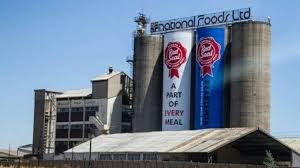National Foods multiple investments to drive capacity
Brokerage firm, IH Securities, says National Foods’ multiple investments are scheduled to increase capacity that will drive the topline, estimated to grow 2 percent year on year to US$350 million in FY24.
In its equity research on National Foods, IH also forecast an EBITDA of US$23,50 million for FY24, representing a margin of 6,7 percent.
The group has continued with its ongoing capacity expansion initiatives, thereby providing further volume potential.
IH said, according to the World Bank, wheat prices are scheduled to ease 17 percent in 2023 as global wheat production scales up to 800 million tonnes under permissible conditions in key producer markets.
In Zimbabwe, the local wheat harvest is forecast to be in surplus for a second year, which will aid in further normalisation of commodity prices and availability.
“In this regard, we expect a recovery in demand for flour by-products from improved pricing points.” Additionally, the recently commissioned Buhler mill in Bulawayo has gone into increasing flour milling capacity for National Foods,” reads the report.
IH said in the maize category, despite El Nino weather conditions pointing to possibly a lower domestic harvest and sales upside for National Foods, it expects a marginal uplift in volumes in the category, weighed down by the continued suspension of import duty on basic goods.
In other developments, the installation of the new pasta line in Harare is on track and the line is expected to be commissioned late in 2023, making it the only large-scale pasta line in the country.
“Investments in the pipeline include a new biscuit line that will extend the product portfolio to specialised biscuits such as creams, a US$5,3 million upgrade of the Harare rice plant, and further investment of US$1,5 million in the hard snacks category.
“Strategic focus for management in the current financial year, will be on optimising operating efficiencies and product quality,” said IH.
The research company said National Foods strong cash generation enables the group to meet its capital expenditure activities.
During the year ended June 30, 2023, national food demand was consequently impacted by the illiquid conditions, with volumes slowing 3 percent year over year to 553,000 tonnes.
The group’s raw material costs remained elevated in the period on account of supply chain blockages from the Russia-Ukraine war.
“As such, average realised selling prices for National Foods were US$621 per tonne compared to an average of US$494 per tonne historically.”
Volumes in the flour division were negatively affected by high wheat prices, posting a 12,3 percent decline year on year, while bread consumption was consequently impacted as prices rose above the US$1 per loaf price, resulting in consumers switching to better-priced starches such as rice.
Stockfeed volumes posted a 10 percent increase compared to FY22, bolstered by demand in the poultry, beef, and dairy sectors, while volumes in the Downpacked unit, which primarily packs rice and salt, saw encouraging growth of 14 percent versus last year.
Rice volume growth continued to be largely driven by the informal sector and likely benefited from consumers substituting for pricier bread, while the snacks division grew 25 percent as both hard snacks and soft snacks saw improved sales and capacity enhancements come on stream.
The company’s foreign currency-denominated sales continue to pick up in line with an increasingly dollarising economy, allowing for sufficient funding to import raw materials.
As a result, revenue grew by 21.7 percent in the period to US$343 million despite negative volume growth as elevated realised prices per tonne buffered the topline.-ebusinessweekly











